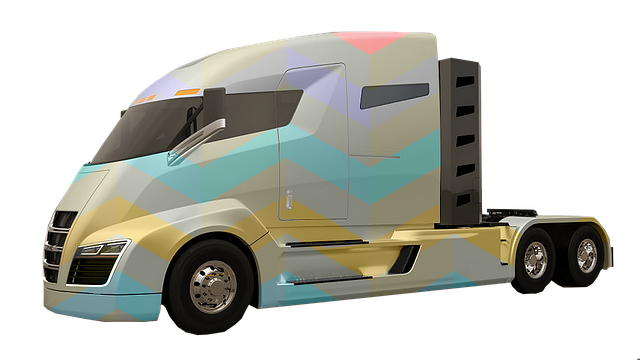Looking to register your car in California? This comprehensive guide breaks down the process step-by-step. From understanding the registration requirements to gathering essential documents, verifying your vehicle’s VIN (using a reliable VIN verifier), and completing the application, we’ve got you covered. Learn how to pay the necessary fees and obtain your custom California license plate with ease.
- Understanding the Registration Process
- Gather Required Documents
- Verify the Vehicle's VIN (Vehicle Identification Number)
- Complete the Registration Application
- Pay Registration Fees and Receive Your Plate
Understanding the Registration Process

Understanding the Registration Process
Registering a car in California involves several steps designed to ensure vehicle safety and identity verification. The process begins with gathering essential documents, including your vehicle’s registration from the previous state, proof of insurance, and a valid driver’s license. Once you have these prepared, it’s time to conduct a Vehicle Identification Number (VIN) inspection or verification. This crucial step ensures that your car matches the information on its title and helps prevent fraud.
In California, a VIN inspection can be done at a designated DMV office or through a mobile vin inspection service. The latter offers convenience by bringing the inspection to you, which is particularly beneficial if you have a busy schedule or accessibility challenges. Mobile vin verification services provide a straightforward and swift way to complete this mandatory part of the registration process, ensuring a smoother transition for your vehicle’s official California registration.
Gather Required Documents

Before you begin the registration process, it’s crucial to gather all the essential documents required by the California Department of Motor Vehicles (DMV). This includes your vehicle’s Registration Application form, a valid driver’s license or ID card, proof of insurance, and perhaps most importantly, the Vehicle Identification Number (VIN) verifier. The VIN is a unique 17-character code that serves as the car’s fingerprint; it can usually be found on the vehicle’s registration certificate, or you can use a mobile VIN verification service for quicker, more convenient access to this information.
Additionally, prepare your purchase agreement or sales receipt, if applicable. If financing the vehicle, bring along the loan documents from your financial institution. For those who are transferring ownership, don’t forget to include a completed and signed Bill of Sale. Having these documents ready will streamline the registration process and ensure a smoother transaction at the DMV.
Verify the Vehicle's VIN (Vehicle Identification Number)

Before you begin the registration process, it’s crucial to verify your vehicle’s Vehicle Identification Number (VIN). This unique 17-character code is a critical component in identifying your car and ensuring a smooth registration. One effective method for VIN verification is through mobile vin inspection or mobile vin verification services. These services allow you to quickly check the VIN against state databases, confirming its authenticity and history, which is essential information when registering a vehicle in California.
By utilizing these modern tools, such as mobile vin inspection, you can save time and avoid potential issues down the line. It’s an easy step that plays a significant role in the registration process, ensuring accuracy and compliance with California’s requirements.
Complete the Registration Application

To start the registration process, you’ll need to complete the Registration Application form provided by the California Department of Motor Vehicles (DMV). This crucial step involves gathering essential information about your vehicle and its history. Make sure to include details like the Vehicle Identification Number (VIN), which can be easily verified through a VIN inspection or mobile VIN verification service for accuracy.
The application will require you to provide proof of ownership, such as a title document, along with any necessary fees. It’s important to ensure all information is correct and complete to avoid delays in the registration process. A thorough review of your vehicle’s history, including any past accidents or outstanding issues, will help streamline this step.
Pay Registration Fees and Receive Your Plate

After completing your vehicle’s inspection and ensuring all necessary documents are in order, it’s time to pay the registration fees. California’s Department of Motor Vehicles (DMV) sets the rates, which typically cover a period of one or two years, depending on the type of vehicle. You can pay online, by phone, or in person at any DMV field office. Once your payment is processed, you’ll receive your unique California license plate. This process might be streamlined with the help of a mobile vin verification service, which allows for a quick and efficient VIN inspection to ensure your vehicle’s history is clean before registration.
Your license plate will have specific characters that identify its year and region of issue. Keep this information handy as you’ll need it for future transactions and when updating your registration. Some services even offer mobile vin verification, enabling you to check your vehicle’s history from the comfort of your home or on-the-go, ensuring a smoother registration process.
Registering a car in California is a straightforward process that requires careful attention to detail. By understanding the registration process, gathering the necessary documents, verifying the Vehicle Identification Number (VIN) using a trusted VIN verifier, completing the application accurately, and paying the associated fees, you can ensure a smooth transition into California’s vehicular landscape. Remember, proper registration not only complies with legal requirements but also contributes to safer roads for all.
